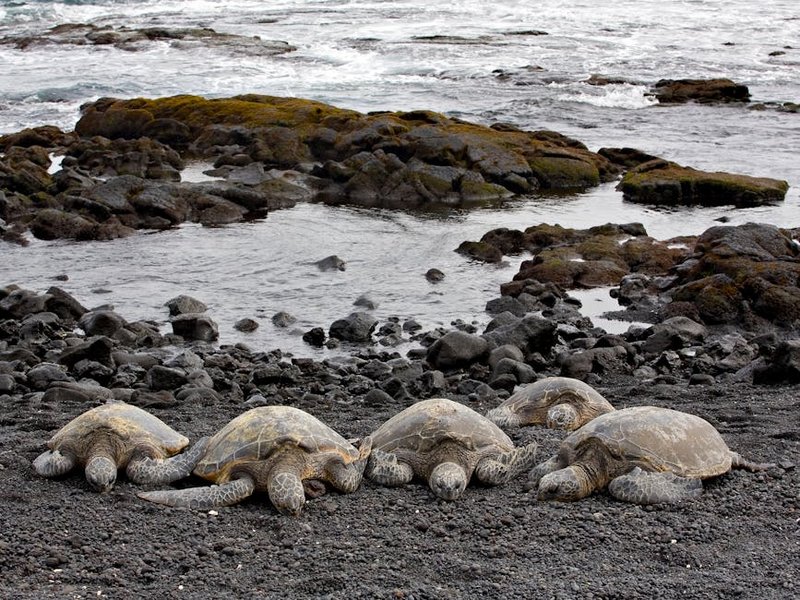Malaysia Perhentian Islands Turtle Watching: An Unforgettable Eco-Adventure
Imagine standing on a pristine beach under a starlit sky, watching ancient sea turtles emerge from the ocean to lay their eggs in the warm sand. Malaysia Perhentian Islands turtle watching offers this magical experience that connects you directly with nature’s wonders. Located off Malaysia’s northeastern coast, these idyllic islands provide one of Southeast Asia’s most accessible and rewarding turtle conservation experiences. You’ll witness green turtles and hawksbill turtles going through their natural nesting rituals while supporting vital conservation efforts. The Perhentian Islands consist of two main islands—Pulau Perhentian Kecil (Small Island) and Pulau Perhentian Besar (Big Island)—both surrounded by crystal-clear waters teeming with marine life. This destination combines ethical wildlife tourism with breathtaking tropical beauty, making it perfect for travelers seeking meaningful adventures. You’ll find that Malaysia Perhentian Islands turtle watching isn’t just an activity; it’s an opportunity to contribute to marine conservation while creating memories that will last a lifetime. The islands’ protected marine parks ensure that turtle populations thrive, offering you a front-row seat to one of nature’s most incredible spectacles.
Malaysia Perhentian Islands Turtle Watching – Essential Information
Before embarking on your turtle watching adventure, understanding the basics will enhance your experience significantly. The Perhentian Islands form part of Terengganu Marine Park, where conservation programs have successfully protected sea turtle populations for decades. You’ll primarily encounter green turtles (Chelonia mydas) and occasionally hawksbill turtles (Eretmochelys imbricata), both of which nest on various beaches across the islands. These gentle creatures follow ancient migration patterns, returning to their birthplace beaches to lay eggs between March and October. The turtle watching experience typically involves joining guided tours operated by licensed conservation groups who prioritize minimal disturbance to the animals. You’ll learn about turtle biology, nesting behaviors, and conservation challenges while witnessing these magnificent creatures in their natural habitat. Remember that responsible tourism practices are crucial—maintaining distance, avoiding flash photography, and following guide instructions ensure both your safety and the turtles’ wellbeing.
What is Turtle Watching in Perhentian Islands? – Understanding the Experience
- Turtle watching involves observing sea turtles during their nesting season when females come ashore at night to lay eggs in sandy beaches, with trained guides ensuring ethical viewing distances and minimal environmental impact.
- The experience typically includes educational components about turtle conservation, life cycles, and the threats facing these marine species, with opportunities to witness hatchlings making their first journey to the ocean during certain seasons.
- Most tours operate during evening hours when turtles are most active, requiring patience and quiet observation, often combined with daytime snorkeling trips where you might encounter turtles feeding in seagrass beds near the islands.
- Budget travelers can manage with $30-50 USD daily by staying in dormitory accommodations, eating at local food stalls, and joining group turtle watching tours, with total trip costs around $300-500 USD for a week including transportation to the islands.
- Mid-range options cost $70-120 USD daily featuring private beachfront rooms, restaurant meals, and private snorkeling trips that include turtle spotting, totaling approximately $600-900 USD for a comprehensive week-long experience.
- Luxury travelers should budget $150-250 USD daily for resort accommodations with air conditioning, guided private turtle watching sessions, and boat charters, with week-long trips costing $1,200-1,800 USD including premium services and dining.
- Tourism Malaysia Official Website
- World Wildlife Fund Sea Turtle Conservation
- Malaysia Department of Marine Parks
Why Malaysia Perhentian Islands Turtle Watching is Special – Unique Aspects
Malaysia Perhentian Islands turtle watching stands out because it occurs within a protected marine park where conservation efforts have shown measurable success in increasing turtle populations. Unlike many tourist destinations, the Perhentians maintain a balance between tourism and preservation, offering you an authentic wildlife encounter rather than a commercialized show. The islands’ relatively remote location means fewer crowds and more intimate experiences with these ancient mariners. You’ll appreciate that your visit directly supports local conservation initiatives through tour fees and park entrance charges. The combination of stunning coral reefs, pristine beaches, and meaningful wildlife interactions creates a comprehensive eco-tourism experience that few destinations can match. This unique blend of natural beauty and conservation awareness makes turtle watching here particularly rewarding for environmentally conscious travelers.
Malaysia Perhentian Islands Turtle Watching – Planning Your Trip
Proper planning ensures you make the most of your turtle watching adventure while respecting the fragile ecosystem. The Perhentian Islands have a tropical climate with two main seasons—the dry season (March to October) is ideal for turtle watching, while the monsoon season (November to February) sees most facilities closed. You’ll need to book accommodations and tours in advance, especially during peak season from June to August. Since the islands are car-free, transportation involves walking or water taxis between beaches. Budget accordingly for marine park conservation fees (approximately $4 USD per person) and turtle watching tours (typically $15-30 USD). Pack light, breathable clothing, reef-safe sunscreen, and mosquito repellent. You should also bring cash since credit card facilities are limited on the islands. Understanding these practical aspects will help you focus on the incredible wildlife experiences awaiting you.
Best Time to Visit for Turtle Watching – Seasonal Analysis
The optimal time for Malaysia Perhentian Islands turtle watching spans from March through October, with peak nesting activity occurring between June and August. During these months, you’ll have the highest probability of witnessing multiple turtles nesting on various beaches. The dry season offers calmer seas for boat transfers and better visibility for related activities like snorkeling with turtles. April and May provide a nice balance of good weather and smaller crowds before the summer rush. If you visit in September or October, you might witness hatchlings emerging from nests—an equally magical experience. Avoid November through February when the monsoon season brings heavy rains, rough seas, and most tourist services shut down completely. Remember that turtle activity depends on natural cycles, so patience is essential regardless of when you visit.
Budget Planning and Costs – Financial Preparation
Essential Preparation Checklist – What to Bring and Know
Preparing properly for your Malaysia Perhentian Islands turtle watching trip ensures comfort and compliance with conservation guidelines. Pack quick-dry clothing, swimwear, and waterproof bags since you’ll be spending considerable time in and around water. Essential items include reef-safe sunscreen to protect marine life, insect repellent for evening turtle watches, and a headlamp with red light mode (standard white lights disturb nesting turtles). You’ll need comfortable walking shoes for beach access and water shoes for rocky areas. Don’t forget your passport since the islands require identification for marine park entry. Make sure to arrange travel insurance that covers water activities and bring any necessary medications since medical facilities are limited. Lastly, download offline maps and important contact information since internet connectivity can be unreliable on the islands.

Malaysia Perhentian Islands Turtle Watching – Top Attractions and Activities
Beyond the primary turtle watching experiences, the Perhentian Islands offer numerous attractions that complement your wildlife adventure. The islands boast some of Malaysia’s best snorkeling and diving sites where you can observe turtles feeding in their natural underwater environment. Coral gardens surrounding both islands teem with colorful marine life, including clownfish, parrotfish, and occasional reef sharks. You can explore hidden coves, hike jungle trails between beaches, or simply relax on pristine stretches of sand like Long Beach and Coral Bay. Many visitors combine turtle watching with island hopping tours to nearby spots like Pulau Rawa or cultural visits to fishing villages on the mainland. The islands’ laid-back atmosphere encourages you to slow down and appreciate nature’s pace, whether you’re reading in a hammock or swimming in bioluminescent waters after dark.
Must-See Highlights – Unmissable Experiences
Your Malaysia Perhentian Islands turtle watching journey should include several key highlights beyond the main event. The Turtle Sanctuary on Perhentian Kecil offers educational displays about conservation efforts and sometimes has hatchlings in protected tanks before release. Snorkeling at Turtle Point near Teluk Kerma guarantees almost certain turtle sightings during feeding times—you’ll swim alongside these graceful creatures in clear turquoise waters. Don’t miss the sunset from Long Beach, where the sky transforms into brilliant oranges and pinks behind silhouetted palm trees. For adventurous souls, the jungle trek between Long Beach and Coral Bay reveals stunning viewpoints and hidden beaches rarely visited by tourists. These complementary experiences enrich your understanding of the islands’ ecosystem while creating diverse memories beyond the nighttime turtle watches.
Hidden Gems and Local Favorites – Beyond the Tourist Trail
Venture slightly off the beaten path to discover the Perhentian Islands’ secret spots that few tourists experience. The local fishing village on Perhentian Besar offers authentic Malaysian culture where you can observe daily life and sample fresh seafood at family-run restaurants. Adam and Eve’s Beach, accessible only by boat or challenging jungle trek, provides complete seclusion with phenomenal snorkeling right from shore. During full moon periods, join locals for nighttime kayaking to witness bioluminescent plankton creating magical blue trails in the water. For the ultimate hidden gem, ask guides about lesser-known nesting beaches where turtle encounters feel more personal and exclusive. These experiences connect you more deeply with the islands’ natural rhythms and community, transforming your trip from a standard vacation into a genuine adventure.
Malaysia Perhentian Islands Turtle Watching – Practical Travel Information
Navigating the practical aspects of your trip ensures smooth travels and maximum enjoyment. The Perhentian Islands are accessible via ferry from Kuala Besut jetty on the mainland, with boats departing regularly during the dry season. You’ll need to purchase return ferry tickets ($15-20 USD) and marine park permits ($4 USD) before boarding. Upon arrival, water taxis ($3-8 USD per trip) transport you between beaches since there are no roads on the islands. Accommodation ranges from basic beach huts to comfortable resorts, with most clustered around popular beaches. Dining options include Malay, Chinese, and Western cuisine, with fresh seafood being a highlight. Electricity operates on limited schedules at some budget places, so power banks are useful. Understanding these logistics helps you transition seamlessly into the islands’ relaxed pace while focusing on the incredible turtle watching experiences.
| Category | Options/Features | Price Range (USD) |
|---|---|---|
| Accommodation | Beach huts, guesthouses, resorts with varying amenities | $15-150 nightly |
| Turtle Watching Tours | Group tours, private guides, conservation-focused experiences | $15-50 per person |
| Food & Dining | Local stalls, beach restaurants, resort dining | $5-25 daily |
| Transportation | Ferry transfers, water taxis, walking between beaches | $20-40 total island access |


